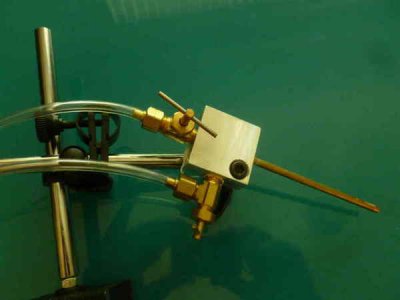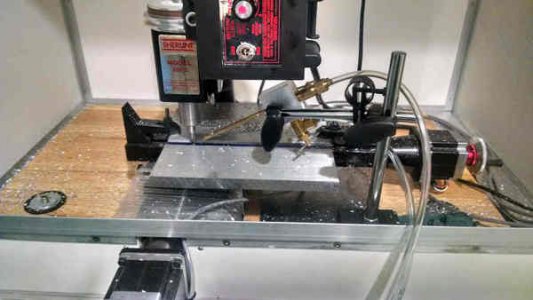- Joined
- Nov 28, 2013
- Messages
- 197
Hopefully the rest of the ingredients will show up today. Following Eric's lead, I'm going to make a nozzle. 'Ought to be a bit of a challenge without a lathe, but I'll forgo the tapered nose. Terry, you were right about drilling the .040 hole. It took two tries, fortunately, the bit that broke hadn't penetrated into the .125 passage. I had planned to use two regulators, one for the air and one for the fluid, but decided that with the needle valves on each line there were too many variables and the thing would be hard to control.
Having a single regulator does provoke a question, though. The height of the fluid container relative to the mixing block will affect flow if the air pressure to the fluid container and the block is the same. Has either of you messed with this?
Having a single regulator does provoke a question, though. The height of the fluid container relative to the mixing block will affect flow if the air pressure to the fluid container and the block is the same. Has either of you messed with this?


